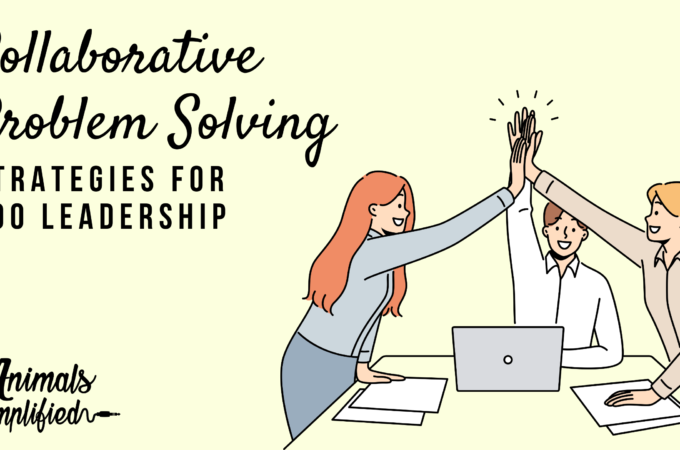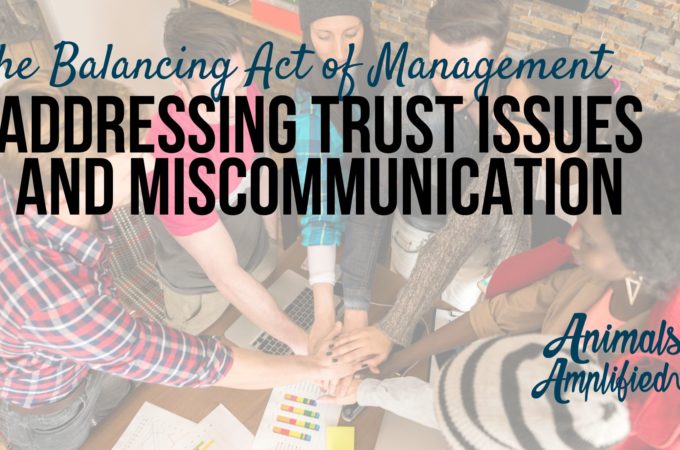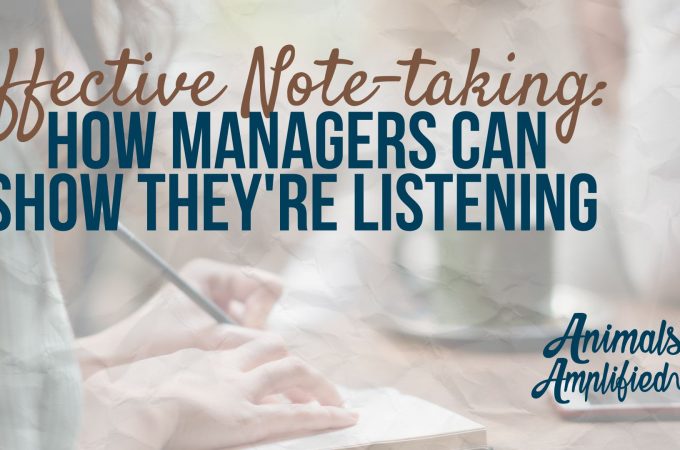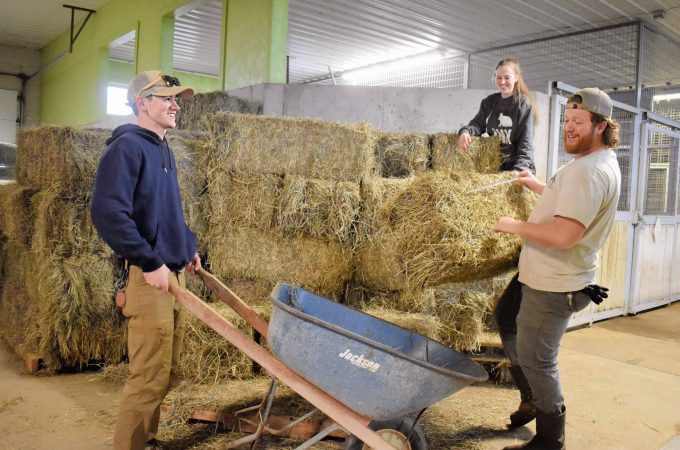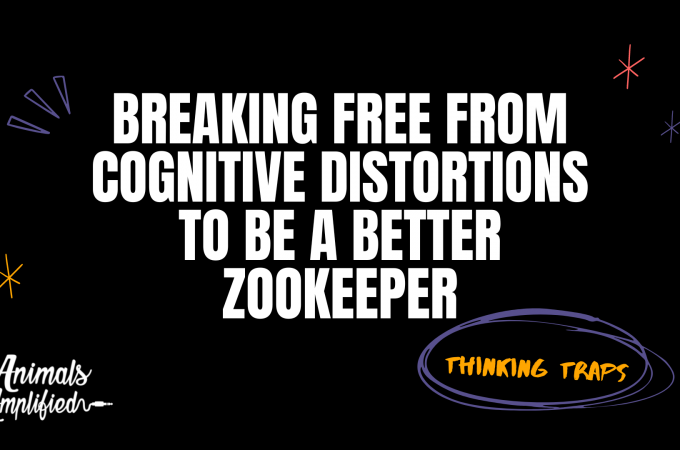
Navigating Organizational Change: Strategies for Coping with Staff Turnover and Limited Resources
Organizational change is an inevitable part of any business or organization. Whether it’s caused by staff turnover, limited resources, or external factors, change can be challenging to navigate. In the zoo industry, this seems to be amplified, with tight budgets, low retention, and unpredictable animals. This means zoo leadership has to be even more skilled at navigating these challenges. In this blog post, we will explore strategies for coping with staff turnover and limited resources, building resilience and adaptability, and navigating external factors.
Coping with Staff Turnover
Staff turnover can have a significant impact on team dynamics and workload. When key team members leave, remaining keepers may have to take on additional responsibilities, increasing workload and stress. If your zoo is operating based on a primary keeper model, there can also be a loss of knowledge during these transitions. Which has the potential to lead to gaps in animal care. These factors can lead to burnout, decreased productivity, and low morale.
To cope with staff turnover, zoo leaders can implement strategies to mitigate the challenges when team members leave.
- Cross-training – Most zoos have primary keepers responsible for their areas and few written protocols. If protocols are written, they are often out of date or missing. One way to combat having information siloed in one primary keeper is to cross-train. Cross-training allows keepers to learn new skills and take on new responsibilities. Reducing the impact of staff turnover on the workload.
- Workload distribution – Often, we think of routines as whole units that can’t be split up. If the kangaroo barn keeper puts in their notice, we think someone has to take on the whole routine. But if each keeper in the surrounding area comes in to take over one enclosure or species, it can spread the load in a way that’s more manageable for the team. Workload distribution ensures that no single keeper is overloaded with work, preventing burnout.
- Effective communication – When staff is reduced, and workload is high, it’s easier for important information to get missed. Creating a system to ensure everyone is notified of changes and updates can reduce miscommunication, errors, confusion, and double work. Effective communication is essential for keeping staff members informed about changes and ensuring everyone is on the same page.
- Overstaffing – Take a look at the average number of positions that you have open at any given time over the past three years. If your average is three open positions throughout the years, you can likely afford to higher three extra keepers without ever increasing your labor budget. This will ensure teams are always full even with staff turnover occurring.
“We had 1 person resign basically without notice, and one person take long mental health leave as the pressure was getting too much. With an already small team, this meant a lot more pressure on the rest of us, with some of us not having actual weekends off, but a day here and there.”
– Tired Zookeeper
As this zookeeper mentions, smaller teams can feel the pain of staff turnover even more. This emphasizes the importance of coping strategies and the need for organizations to implement them to maintain productivity and morale.
Are you struggling to cope with staff turnover? Use the chat button in the corner of this page to reach out to Animals Amplified.
How Zookeeper Leadership Can Maximize Limited Resources
Limited resources can pose significant challenges for zookeeper leadership, affecting their ability to achieve their goals. For example, a lack of funding may make it difficult to hire additional staff or invest in new equipment. This can impact the quality of care and limit the ability to grow and improve both at the organizational level and at the keeper level. To maximize limited resources, organizations can prioritize tasks, delegate responsibilities, and seek partnerships and collaborations.
Prioritizing tasks
I mentioned in a prior blog some strategies we use in my zookeeper leadership training to help keepers and teams prioritize. You can read more about those here. In addition, one question many keepers find helpful is, “Who am I cleaning for?” Often we as keepers are satisfied by the pressure-washed surface or sparkling water dish, but it’s not what the animals need. Research has shown time and again that overcleaning can be harmful to our animals’ breeding and stress levels.
When you worry that it’s not clean enough, think about the animal’s natural environment, and understand USDA regulations. Ask, “Who am I cleaning for?” This will allow you to look at all your animal care tasks and make better decisions about prioritizing. When zoo leadership assists in prioritizing tasks, it can be very impactful. It tells the entire team what is most important and ensures that resources are allocated to the most important tasks. Ensuring the organization achieves its goals.
Delegating responsibilities
Understanding the skills of each team member and delegating responsibilities that fit their strengths is important. In times of high staff turnover, zookeeper leadership might need to reallocate resources and distribute responsibilities differently. Maybe you have a certain keeper that can knock out the kitchen faster than anyone else. Put that keeper on kitchen duty and redistribute other resources throughout the routine.
You can also shift your mindset around delegation and think about delegating outcomes instead of individual tasks. So instead of explaining step by step how to accomplish a certain task, you describe the outcome. For instance, the springbok keeper leaves the zoo, and there is a detailed protocol for cleaning indoor holding. You can delegate the outcome of how the barn should look and how long it should take to get there. Give the relief keeper the protocol and say, “If you can find a more efficient way to get to the desired results, please let me know, and we’ll change the protocol.” Delegating outcomes allows staff members to take on additional tasks and gives the organization a chance to improve processes.
Seeking partnerships and collaborations
Sometimes, zoo leadership gets stuck thinking inside the box. In Beyond Animal Training, we teach a method of timed brainstorming that allows for a “YES” meeting. This means no idea is a bad idea, and you brainstorm without thinking about limitations. When you brainstorm like this, you have the opportunity to come up with solutions that you might not have seen in the first place.
Is there someone from the restaurant that wants to volunteer a few hours before their shift to cover the commissary keeper that just left?
Could someone in janitorial that might be a quick study on cleaning small primate holding until that position can be filled?
Is there a corporation that wants to send out a group of volunteers who might be able to help re-perch the aviary since the bird team is experiencing staff turnover?
Seeking partnerships and collaborations can provide access to additional resources and expertise, allowing organizations to achieve their goals more efficiently.
Building Resilience and Adaptability in Your Zoo Culture
When I talk about animal training, this is a platform I spend a lot of time on. I have presented multiple times on how to build resilience and confidence in your animals. Yet resilience and adaptability in people and our zoo culture are decreasing daily.
Building resilience and adaptability is essential for navigating organizational change and working in an environment with limited resources. Resilience allows staff members to cope with challenges and setbacks, while adaptability enables them to adjust to changes in the organization or external environment.
To build resilience, zookeeper leadership must help keepers practice self-care, seek colleague support, and maintain a positive mindset. Sometimes they also have to help them see the forest through the trees during regular one-on-ones. I’ll share three examples of how zoo leaders can support their teams in ways that increase resilience and adaptability.
Requiring Days Off, Breaks, and Vacations
Keepers are caregivers. Which means they are predisposed to putting everyone and everything before them. Recently, one of the teams at my facility was dealing with the loss of many animals. Immediately, I went to their supervisors and asked them to adjust the schedule so everyone could get a day off. I also wanted to bring our Employee Assistance Program for a group session. The supervisors asked the team if they needed either, and they said no. So they kept on trucking. After a few weeks and some continued struggles, the team was suffering. I’m still kicking myself for not forcing that self-care.
Self-care involves taking care of oneself physically, mentally, and emotionally. This can include exercise, meditation, or spending time with family and friends. It doesn’t include powering through it, so you don’t seem weak or burden other people. Leaders sometimes know what our teams need even if they don’t. If you know your team would benefit from self-care, ensure they can get it.
Lead With a Positive Mindset
When we have staff turnover as leaders, it affects us on multiple levels. We’ve all heard, “People don’t leave companies. They leave bosses.” So it’s inevitable when someone leaves that we feel a little unsure about our leadership. In addition to being a little shaken, we’re also working to cover that spot, reviewing resumes, sitting in interviews, and discussing potential new hires. On top of that, the stress of being unable to be out there in the trenches helping our team when we know their workload has increased. We’re worried about zoo culture, burnout, and additional turnover. We’re also being watched.
I can remember watching my curator when she came in with her morning coffee. The force with which she threw her empty cup into the trash would tell me what kind of day I would have. We can’t let our frantic energy, our frustrations, or our fears trickle to the team. Maintaining a positive mindset can help staff members maintain their motivation and focus, even in challenging circumstances. But how do you do it? I have a lot of resources on this, and a lot more are coming, but for today we’ll focus on your circle of influence by asking the Question Behind the Question. When faced with challenges, we’re going to ask any of the following questions:
- Is this within my circle of influence?
- What can I do to improve this situation?
- How can I support my team through this challenge?
- What is my approach to this situation telling my team?
A warning about this system. If can frustrate your teams. Recently I heard from a keeper who was frustrated with the city government and board that controls the zoo. The city officials have no zoo experience, and it isn’t their priority or focus so they say no to every plan, expansion, or change. The board isn’t very invested, so they don’t reply to ideas for months. This keeper brought her concerns about the lack of future planning to her supervisor and felt dismissed when the supervisor replied, “I want to focus on what we can control and our immediate needs. We have a lot of day-to-day improvements we need to make.”
Your teams will want you to be able to solve the problems they can’t. You should be the superhero, and sometimes you will be, and other times your hands will be tied. You must still take the time to hear them out and share your plan with them. I would assume this supervisor has a plan.
She could have said, “I have already seen some improvements with the board and city. They approved the habitat repair for bears, and I have a meeting with the board president next week to work on our mission statement, but I know I can’t change them or the system. What I can do is show them that we can do amazing things with the resources they provide us, and hopefully, that will inspire them to continue to invest more in us.”
Then she could have asked this keeper a question that realigned to personal accountability. “Can you think of ways we can show them how resourceful we are so they are willing to entrust us with more resources?” or “Do you have anything specific you want to share that I can include in my mission statement presentation next week?” or “What do you think the next priority should be?”
Guiding Them Through the Storm
In a recent email, a keeper who was struggling with staff turnover and limited resources expressed that she didn’t feel like she was growing.
“I feel like I want the place to grow, I want the staff to grow, but there is no room for improvement. This makes it hard for me, what do I envision what things look like with my coworkers a year from now? Will I be in the same place as I won’t be able to grow myself, or should I stay, try to teach my coworkers my job so they can grow and learn and hope that I find time myself to build a future planning.”
– Tired Zookeeper
The irony is that this keeper is in the thick of a storm, and storms make us stronger and more resilient. They literally help us grow strong. Think of how strong oak trees grow. When they’re young their trunks are pliable and bendy. The more wind, weather, and storms they endure, the stronger and taller they become. Many of our keepers are getting blown around and beaten by the storms, but no one is telling them that it will make them stronger and more resilient to learn how to weather the storm instead of running from the storm.
If you’re in leadership, likely you’ve weathered a couple of storms. You have stories where you can say, “At this point in my life, I wanted to quit.” What happened? Why didn’t you quit? What makes you stay? Share those things with your struggling keepers, and then ask them, “What do you need from me to help you weather this storm?” Make them give you a tangible list of things you can do to help.
We can’t bubble-wrap our animals and protect them from every negative experience in their life, and we can’t do it for our keepers either. Zoo leaders also can’t leave them out in the cold to suffer through the storm on their own. We have to give them what we know they need, lead by example, be vulnerable and share our struggles, and navigate the storm with them. When we get to calm seas we’ll have a strong team prepared for the next storm.
Navigating External Factors that Affect Your Zoo Leadership
As mentioned before, external factors, such as local policies and regulations and zoo boards, can pose significant challenges for middle managers. These factors can impact the team’s ability to achieve its goals, and failure to navigate them effectively can have serious consequences.
To navigate external factors, zoo leaders can stay informed, build relationships with key stakeholders, and advocate for change. Those who ask the questions get the answers. Sometimes what’s happening at the city level or what occurs at zoo board meetings doesn’t actively trickle down to middle management. Staying informed by asking questions or attending board meetings allows leaders to anticipate changes and adjust their strategies accordingly.
You should also never underestimate the power of building relationships with key stakeholders. When given the opportunity to introduce yourself or offer experiences with your animals to local government officials or community leaders, seize it. They can provide access to resources and support and are more willing to do so if they have a relationship with you. Advocating for change involves taking an active role in shaping policies and regulations that impact the organization’s goals.
It always surprises me how little zookeepers and zoo leaders know about current legislation, policies, or proposals that might affect them. Stay up to date on these trends nationally by joining ZAA’s legislation committee, following your representatives and finding out about how they vote on industry-related issues, signing up for AZA committee newsletters, and taking the opportunity to comment on proposed USDA regulations.
Using your relationships, voice, and resources can help you plan for and also have a say in some of these external factors that affect your zoo culture. When we stop being the victim of external factors and get involved it can empower and rejuvenate us more effectively than extra time off.
To learn more about current USDA proposed rules regarding animal ambassadors, watch this video.
Leadership Skills to Cope with Staff Turnover
Small facilities are especially impacted by staff turnover, limited resources, and external factors. The big facilities aren’t immune to these things either. In fact, sometimes their size limits their progress and adaptability.
Implementing the strategies mentioned in this blog for coping with staff turnover, maximizing limited resources, building resilience and adaptability, and navigating external factors can help teams achieve their goals despite these challenges. Learning to navigate these challenges will build your leadership skills and help you weather future storms.
For more on leadership skills development and coping with leadership challenges, read our blog.

